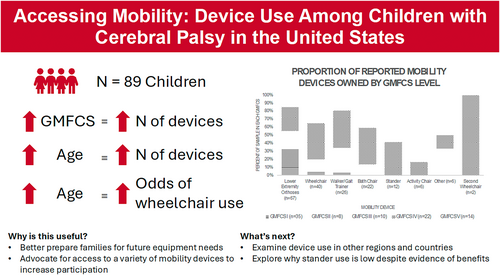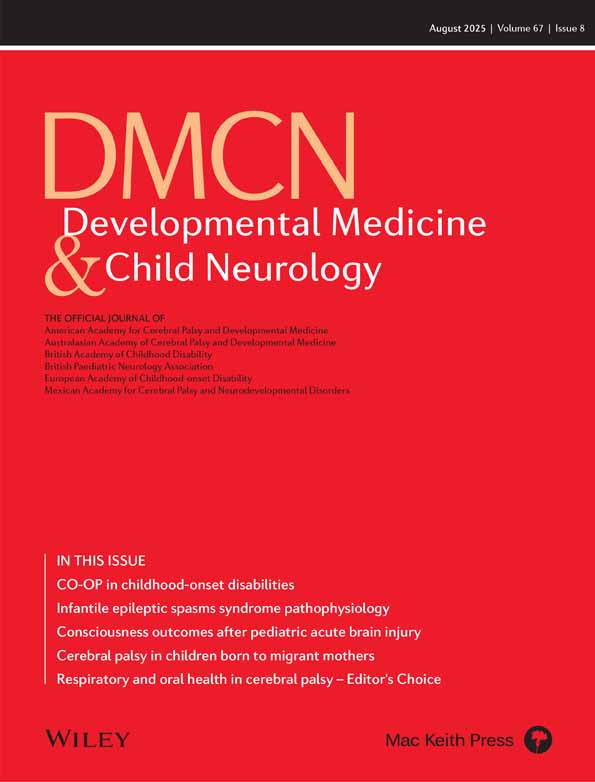Mobility device use in children with cerebral palsy
Abstract
Children with cerebral palsy (CP) use mobility equipment to facilitate movement and stable body positioning. In this study, researchers aimed to answer the questions: (1) which mobility devices are most common in children with CP and (2) are the number and type of devices used related to age, motor ability, insurance provider, or household income? Parents of 89 children with CP aged 2 to 8 years reported the mobility equipment used by their child. Eight device categories were identified.
The most commonly reported devices were leg braces (75.3%), followed by wheelchairs (44.9%), walkers/gait trainers (29%), bath chairs (24.7%), standers (13.5%), activity chairs (6.7%), second wheelchair (6.7%), and other mobility devices (2.2%). As children got older, they used more devices. Likewise, children with greater motor ability used fewer devices than children with lesser motor ability. Older children were more likely to use a wheelchair than younger children. No other mobility devices were related to age. Wheelchairs, walkers, bath chairs, and standers were more common in children with limited motor ability. The number and types of devices were not related to insurance type or income level.





